동사 의 3 단 변화
한국어 문법에서 동사의 3단 변화는 동사가 주어의 형태나 주어와 목적어의 형태에 따라 변하는 규칙을 의미합니다. 이러한 변화는 동사의 활용 방법을 이해하는 데 중요한 역할을 합니다. 이 기사에서는 1단 및 2단 동사의 변화, 3단 동사의 변화, 그리고 동사 활용으로 인한 어려움과 자습 방법에 대해 자세히 알아보겠습니다. 또한, 각 동사 변화 형태에 따른 예시를 통해 실제 사용 방법을 파악하겠습니다.
1. 1단 및 2단 동사의 변화: 주어의 형태에 따라 변하는 동사의 활용 방법
1단 및 2단 동사는 주어의 형태에 따라 변화합니다. 주어가 “나”로 끝나는 경우 1단, 그렇지 않은 경우 2단으로 활용합니다. 이때, 주어의 여러가지 종류에 따라 동사의 변화 형태가 달라집니다. 예를 들어, 동사 “보다”의 경우 “나”로 끝나는 경우에는 “보아”로, 그렇지 않은 경우에는 “보여”로 변합니다.
2. 3단 동사의 변화: 주어와 목적어의 형태에 따라 변하는 동사의 활용 방법
3단 동사는 주어와 목적어의 형태에 따라 변화합니다. 주어나 목적어가 “나”로 끝나는 경우에는 “노”로 변하고, “이”로 끝나는 경우에는 “어”로 변합니다. 예를 들어, 동사 “가다”의 경우 주어가 “나”로 끝나면 “가노”로, 목적어가 “나”로 끝나면 “가노”로 변합니다.
3. 1단 동사의 활용: 주어의 종류에 따라 변하는 1단 동사의 활용 규칙
1단 동사는 주어의 종류에 따라 변화합니다. 주어가 “나”, “너”, “그”로 끝나는 경우에는 동사 뒤에 “아” 또는 “어”를 붙여 활용합니다. 예를 들어, 동사 “보다”의 경우 “나”로 끝나는 주어는 “보아”로, “그”로 끝나는 주어는 “보어”로 활용합니다.
4. 2단 동사의 활용: 주어의 종류 및 시제에 따라 변하는 2단 동사의 활용 규칙
2단 동사는 주어의 종류 및 시제에 따라 변화합니다. 주어가 “나”, “너”, “그”로 끝나고 현재 시제인 경우에는 동사 뒤에 “아” 또는 “어”를 붙여 활용합니다. 예를 들어, 동사 “가다”의 경우 “나”로 끝나고 현재 시제인 주어는 “가아”로, “그”로 끝나고 현재 시제인 주어는 “가어”로 활용합니다.
5. 목적어와 함께 쓰이는 3단 동사의 활용: 주어와 목적어의 종류에 따라 변하는 3단 동사의 활용 규칙
3단 동사는 주어와 목적어의 형태에 따라 변화합니다. 주어나 목적어가 “나”로 끝나는 경우에는 동사 뒤에 “노”를 붙여 활용합니다. 예를 들어, 동사 “먹다”의 경우 주어가 “나”로 끝나거나, 목적어가 “나”로 끝나면 “머노”로 활용합니다.
6. 동사 활용 예시: 각 동사 변화 형태에 따른 예시를 통해 실제 사용 방법 파악
다음은 동사 “보다”, “가다”, “먹다”의 활용 예시입니다.
– 1단 동사 “보다”의 활용:
나: 보아
너: 보아
그: 보아
– 2단 동사 “가다”의 활용:
나: 가아
너: 가아
그: 가아
– 3단 동사 “먹다”의 활용:
나: 머노
너: 머노
그: 머노
7. 동사 활용 시 특이사항: 일부 동사에서 주어나 목적어의 형태에 따라 특이하게 변하는 현상 설명
일부 동사에서는 주어나 목적어의 형태에 따라 특이하게 변하는 현상이 있습니다. 예를 들어, 불규칙한 동사 “잡다”는 주어가 “나”로 끝나면 “잡으노”로 활용되지만, 목적어가 “나”로 끝나면 “잡아노”로 활용됩니다. 이러한 예외적인 현상은 동사 활용 시 주의해야 할 부분입니다.
8. 동사 활용의 어려움: 동사 변화에 따른 문법적인 규칙을 익히는데 어려움이 있는 이유 분석
동사 활용은 한국어 학습자들에게 어려움을 겪는 부분 중 하나입니다. 이는 동사의 변화에 따른 문법적인 규칙을 익히는 것이 어렵기 때문입니다. 예외적인 규칙이나 형태 변화에 대한 이해가 필요하기 때문에 실제 사용을 많이 해보고 경험을 쌓는 것이 중요합니다.
9. 동사 활용 자습 방법: 동사 변화 규칙을 숙지하고 활용하는데 도움이 되는 자습 방법 및 학습 자료 추천
동사 활용을 자습하는데에는 몇 가지 방법이 있습니다. 첫째, 동사 변화 규칙을 제대로 이해하기 위해 문법 교재나 인터넷 자료를 참고하는 것이 중요합니다. 둘째, 많은 예시를 통해 실제 활용 방법을 익히고 모의 대화나 작문을 통해 동사를 사용하는 연습을 해야 합니다. 마지막으로, 불규칙한 동사의 변화에 대해서도 인터넷 자료나 학습 자료를 찾아 공부하는 것이 도움이 됩니다.
이와 함께, 불규칙동사 3단변화에 대한 자세한 내용을 담은 PDF 자료를 활용할 수 있습니다. 이 자료는 보다 더 심도 있게 동사의 3단 변화에 대해 학습하고 싶은 사람들에게 유용한 자료일 것입니다. 또한, “불규칙동사 3단변화 pdf”라는 키워드를 검색하여 관련 자료를 찾아볼 수도 있습니다.
마지막으로, “find 3단변화”, “see 3단변화”, “drive 3단변화”, “forget 3단변화”, “hold 3단변화”, “lose 3단변화”, “shine 3단변화”와 같은 특정 동사에 대한 3단 변화 규칙을 찾기 위해 검색 엔진을 활용할 수도 있습니다.
요약하자면, 한국어 동사의 3단 변화는 동사의 활용 방법을 이해하는 데 중요한 개념입니다. 주어와 목적어의 형태에 따라 동사가 변화하며, 이에 따른 규칙을 익히는 것이 중요합니다. 동사 변화에 대한 이해와 많은 예시를 통한 실제 사용 경험을 쌓는다면 한국어 동사의 활용에 대한 이해도가 높아질 것입니다.
사용자가 검색한 키워드: 동사 의 3 단 변화 불규칙동사 3단변화 pdf, find 3단변화, see 3단변화, drive 3단변화, forget 3단변화, hold 3단변화, lose 3단변화, shine 3단변화
Categories: Top 53 동사 의 3 단 변화
동사 3단 변화는 잊고❌ 이렇게 공부하세요! 불규칙동사 ☝️탄
여기에서 자세히 보기: taomalumdongtien.net
불규칙동사 3단변화 Pdf
Find 3단변화
Understanding 3단변화:
In Korean, verbs are categorized into three groups, each with its own specific conjugation pattern. These groups are known as 3단 (sam-dan), which means “three steps” or “three tiers” in Korean. The three-step verb conjugation system consists of three subgroups: “ㅏ/ㅗ” (a/o verbs), “ㅓ/ㅣ” (eo/i verbs), and “하” (ha verbs). Each verb group has its own set of suffixes that are used to conjugate the verbs based on the desired tense, mood, and formality.
The importance of 3단변화 in Korean:
Mastering the three-step verb conjugation is crucial for effective communication in Korean. Understanding when and how to use the different forms of verbs is vital to convey the intended meaning accurately. Without proper conjugation, Korean sentences may lose their grammatical integrity or become confusing to native speakers. By gaining a firm grasp of 3단변화, learners can ensure that their speech and writing sound more natural and idiomatically correct.
Rules and examples of 3단변화:
1. Group 1: ㅏ/ㅗ (a/o) verbs – This group includes verbs that end in “ㅏ” or “ㅗ” in their dictionary form. When conjugating these verbs, the vowel sound changes to “ㅏ” or “ㅗ” based on the tense.
– Examples:
– “가다” (to go) -> “가요” (present tense, informal polite)
– “눕다” (to lie down) -> “누워요” (present tense, informal polite)
2. Group 2: ㅓ/ㅣ (eo/i) verbs – This group includes verbs ending in “ㅓ” or “ㅣ” in their dictionary form. When conjugating these verbs, the vowel sound changes to “ㅓ” or “ㅣ” based on the tense.
– Examples:
– “서다” (to stand) -> “서요” (present tense, informal polite)
– “이다” (to be) -> “에요” (present tense, informal polite)
3. Group 3: 하 (ha) verbs – This group contains verbs ending in “하” in their dictionary form. When conjugating these verbs, the “하” stem generally remains unchanged, except when forming the past tense.
– Examples:
– “하다” (to do) -> “해요” (present tense, informal polite)
– “먹다” (to eat) -> “먹어요” (present tense, informal polite)
FAQs:
Q1. Are there any irregular verbs in Korean that do not follow the 3단변화 patterns?
A1. Yes, there are a few irregular verbs in Korean, known as “불규칙동사” (bul-gyu-chik dong-sa). These verbs have unique conjugation patterns that do not strictly adhere to the rules of 3단변화. Some examples of irregular verbs are “하다” (to do), “가다” (to go), and “오다” (to come).
Q2. Are there any exceptions or irregularities within the 3단변화 groups?
A2. While most verbs within the 3단변화 groups follow the established conjugation patterns, there are a few exceptions with slight irregularities. These exceptions should be learned individually, and careful attention must be paid to their conjugation forms.
Q3. How can I practice and reinforce my understanding of 3단변화?
A3. To enhance your understanding and proficiency in 3단변화, regular practice is essential. Engage in exercises and drills specifically designed to reinforce your knowledge of verb conjugation. Additionally, immerse yourself in Korean language materials, such as books, movies, or conversations, to witness the application of 3단변화 in real-life contexts.
Q4. Are there any online resources or textbooks that can further assist me in learning 3단변화?
A4. Yes, there are numerous online resources and textbooks available that provide explanations, examples, and exercises for learning 3단변화. Some popular resources include websites like TalkToMeInKorean.com, HowToStudyKorean.com, and textbooks like “Korean Grammar in Use” by Seoul National University Press.
In conclusion, understanding and mastering 3단변화 in Korean is vital for effective communication. By comprehending the three-step verb conjugation system, learners can ensure accuracy, clarity, and naturalness in their spoken and written Korean. Through regular practice and utilization of available resources, learners can strengthen their grasp of 3단변화, taking a significant step towards achieving fluency in the Korean language.
주제와 관련된 이미지 동사 의 3 단 변화
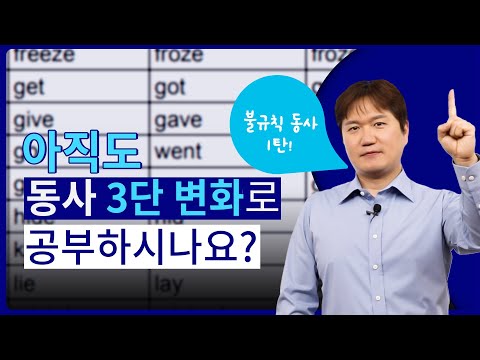
동사 의 3 단 변화 주제와 관련된 이미지 18개를 찾았습니다.




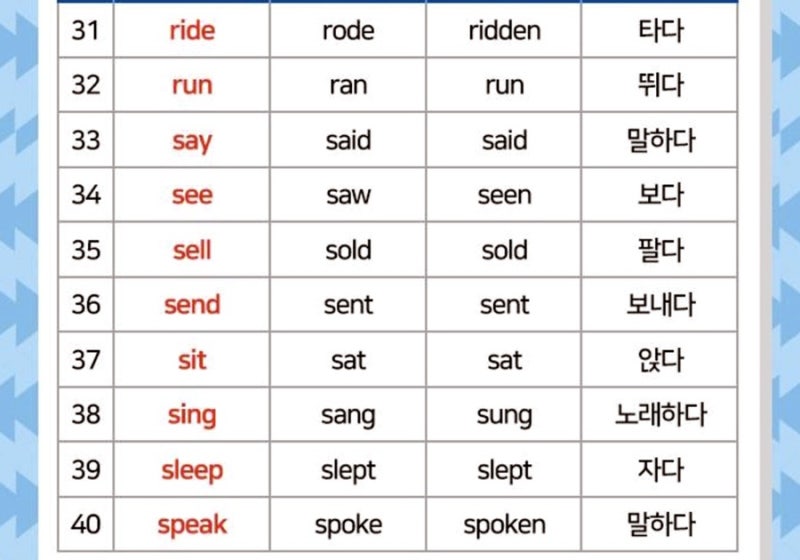
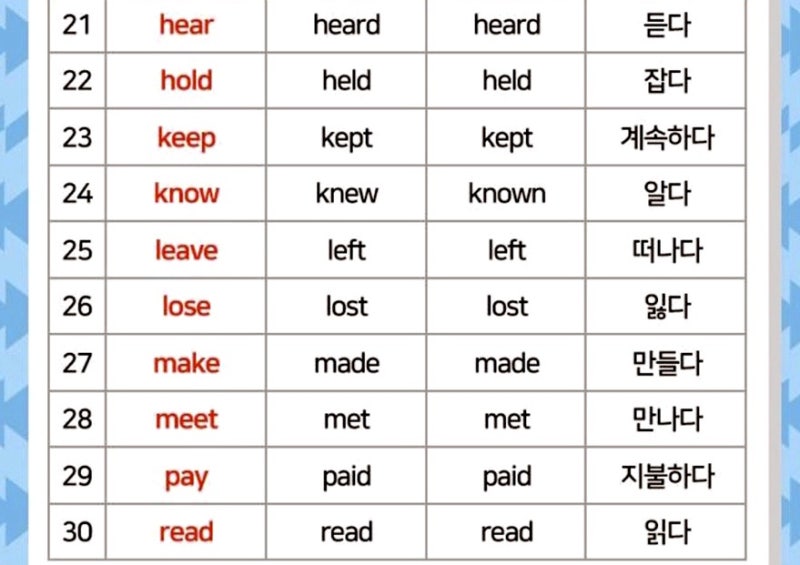


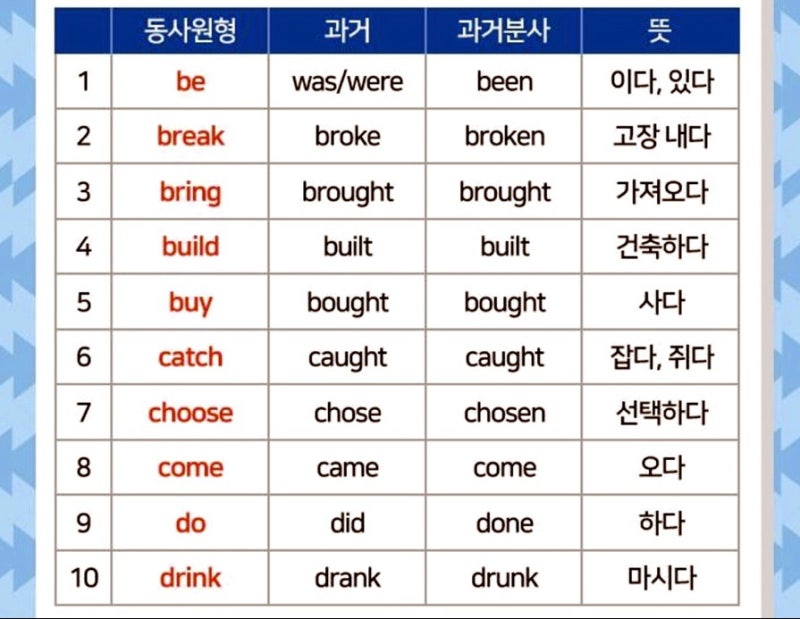
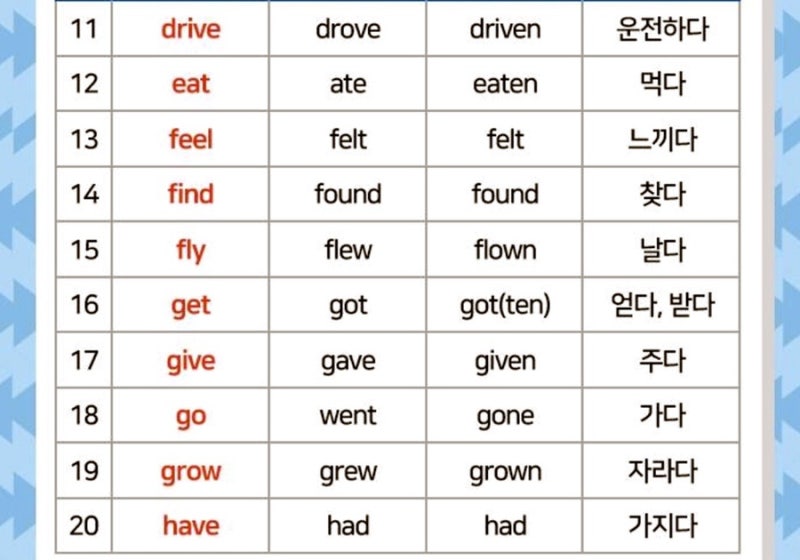
![동사의 불규칙 삼단변화, A-B-B-1. [2탄] - YouTube 동사의 불규칙 삼단변화, A-B-B-1. [2탄] - Youtube](https://i.ytimg.com/vi/lIsCC2aMkeQ/maxresdefault.jpg)


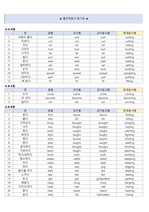
![Chapter2] PSS2-4 불규칙 변화 동사의 과거형 [중학영문법3800제 2학년] - YouTube Chapter2] Pss2-4 불규칙 변화 동사의 과거형 [중학영문법3800제 2학년] - Youtube](https://i.ytimg.com/vi/hTK9TteFmLY/maxresdefault.jpg)
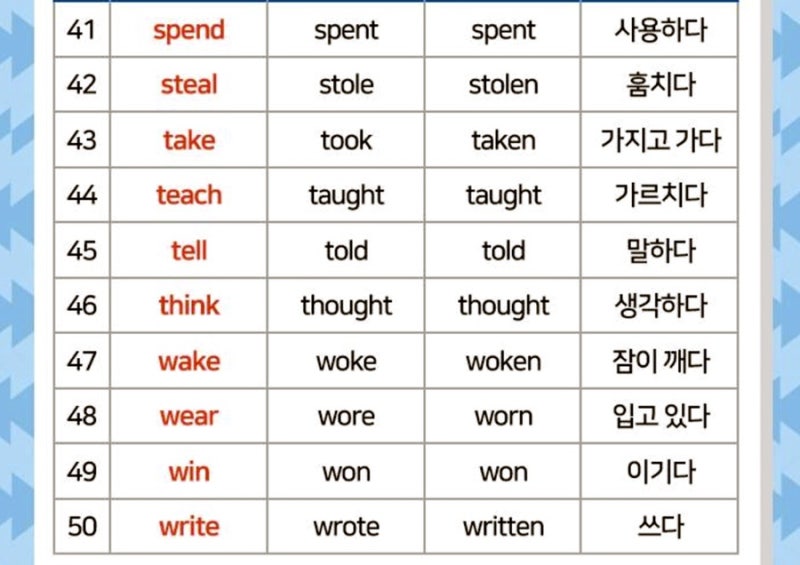
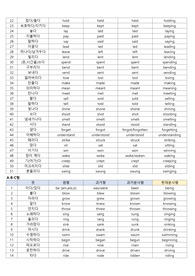





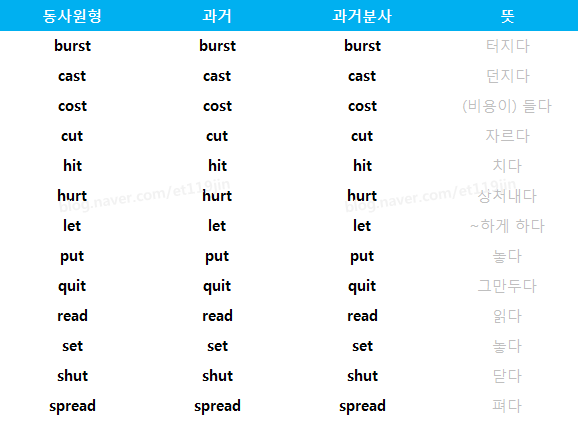
![영어 동사의 3단 변화 (규칙형) 쉽게 정리 [-ed 발음] 영어 동사의 3단 변화 (규칙형) 쉽게 정리 [-Ed 발음]](https://t1.daumcdn.net/cfile/tistory/9993FB415EB0B9B82D)



![불규칙 동사의 3단 변화] 동사 변화 (현재-과거-과거분사) 쉽게 배우기 #불교칙동사 3단변화 # 불규칙동사표 #동사3단변화 - YouTube 불규칙 동사의 3단 변화] 동사 변화 (현재-과거-과거분사) 쉽게 배우기 #불교칙동사 3단변화 # 불규칙동사표 #동사3단변화 - Youtube](https://i.ytimg.com/vi/utfjjw6OELU/maxresdefault.jpg)
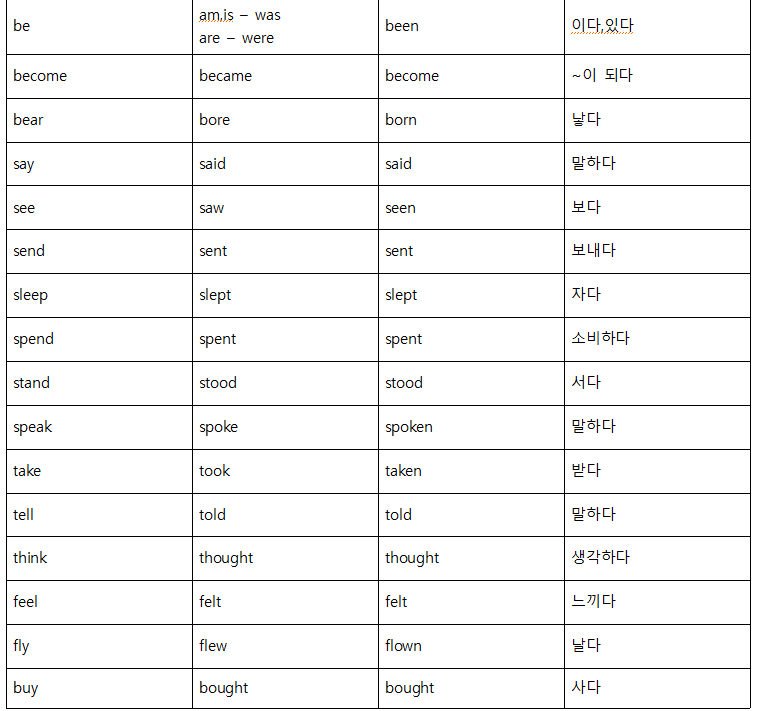

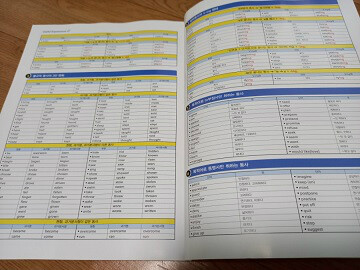
![동사의 3단변화 표 - 시보드 03강] 동사에 시간 표시하기 > Youtube 영상(대본) | 암기없는 영어 원리” style=”width:100%” title=”03강] 동사에 시간 표시하기 > YouTube 영상(대본) | 암기없는 영어 원리”><figcaption>03강] 동사에 시간 표시하기 > Youtube 영상(대본) | 암기없는 영어 원리</figcaption></figure>
<figure><img decoding=](https://i.ytimg.com/vi/mpyH9BMIJ60/mqdefault.jpg)
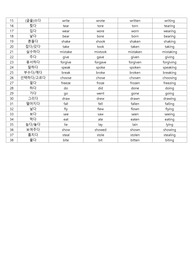

![중3 영어 기본 불규칙동사 테스트 [3단변화][80단어] 시험자료 중3 영어 기본 불규칙동사 테스트 [3단변화][80단어] 시험자료](https://image4.happycampus.com/Production/thumb212/2015/06/25/data13391543-0001.jpg)




![당근마켓 03강] 동사에 시간 표시하기 > Youtube 영상(대본) | 암기없는 영어 원리” style=”width:100%” title=”03강] 동사에 시간 표시하기 > YouTube 영상(대본) | 암기없는 영어 원리”><figcaption>03강] 동사에 시간 표시하기 > Youtube 영상(대본) | 암기없는 영어 원리</figcaption></figure>
<figure><img decoding=](https://i.ytimg.com/vi/C0tPuvAjYXA/mqdefault.jpg)




Article link: 동사 의 3 단 변화.
주제에 대해 자세히 알아보기 동사 의 3 단 변화.